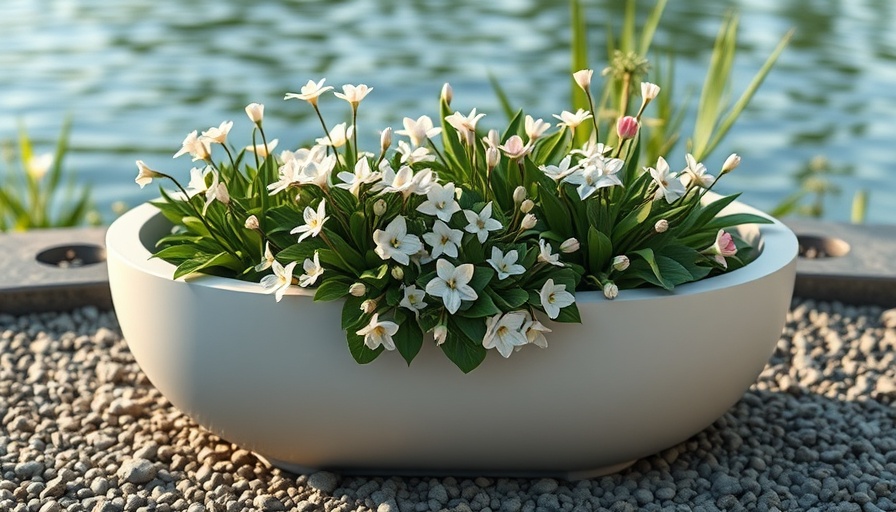
Exploring the Colors of Tomorrow: Chelsea Flower Show Trends
The 2025 Chelsea Flower Show is more than just a gathering of lush flora; it’s a showcase of innovation and creativity in horticultural design and the environment. This year, we see a delightful mix of colors and plant varieties that reflect not only aesthetic preferences but also larger ecological trends.
Color Palette Reimagined: The Dominance of Purple and Yellow
At this year's show, purples like Salvia caradonna and soft yellows such as Trollius x culturum ‘Cheddar’ are stealing the spotlight among the vibrant displays. A focus on these colors aligns with growing trends emphasizing softer hues in landscape design, inviting calmness and harmony. Green foliage also plays a significant role, urging visitors to consider how textures and shapes can transform a garden.
Breaking the Mold: Rediscovering Variegated Shrubs
Once neglected, variegated shrubs are making a stunning comeback, especially in the Japanese Tea Garden designed by Kazuyuki Ishihara, where Aucuba japonica ‘Variegata’ takes center stage. This signals a broader trend in which past styles are revisited with fresh eyes, acknowledging their utility in modern designs, particularly in shaded garden corners.
Eco-Brutalism: The Future of Garden Design
One of the standout features this year is the concept of 'eco-brutalism', as seen in the British Red Cross garden designed by Charlotte Harris of Harris Bugg Studio. This modernist approach blends sustainability with aesthetic appeal, utilizing hypertufa materials to create stunning, hexagonal structures that present challenges for alpine plants. This innovation may inspire homeowners to think outside traditional garden structures, favoring designs that channel both beauty and environmental responsibility.
The Art of Crevice Planting: Space-Saving Strategies
Crevice planting emerges as a clever technique gaining traction at the show. This approach uses every nook and cranny in a garden, proving beneficial for urban residents dealing with limited space. It’s vital for eco-conscious homeowners seeking to maximize their gardens. By interspersing plants that thrive in diverse conditions, one can achieve a flourishing garden despite spatial constraints.
Trends Tied to Sustainability: A Responsibility Acknowledged
While beauty remains the focal point, there is an unmistakable shift towards sustainability in the gardening community. Yes, trends at events like the Chelsea Flower Show are influenced by growers and seasonality, but the commitment to eco-friendly practices is palpable. Expect to see practices that not only embrace organic gardening but also communicate larger ecological narratives.
Conclusion: The Chelsea Flower Show as a Microcosm of Change
The 2025 Chelsea Flower Show encapsulates current gardening trends while hinting at a brighter, more sustainable future for horticulture. As homeowners, enthusiasts, and industry professionals gather to celebrate plant diversity, the lessons from the show can inspire a paradigm shift in individual gardening practices. Embrace these insights and explore how they can harmonize with your own outdoor spaces.
For those preparing for gardening pursuits, seek local workshops that focus on sustainability and innovative designs. Your garden can be a canvas for these emerging trends, reflecting not just a personal aesthetic, but a commitment to ecological stewardship.
 Add Row
Add Row  Add
Add 




Write A Comment